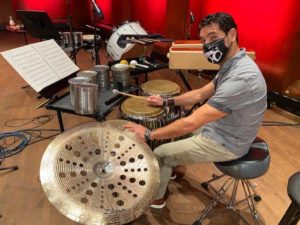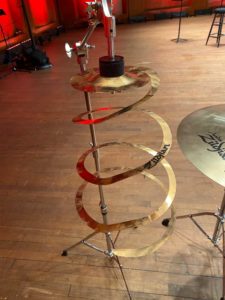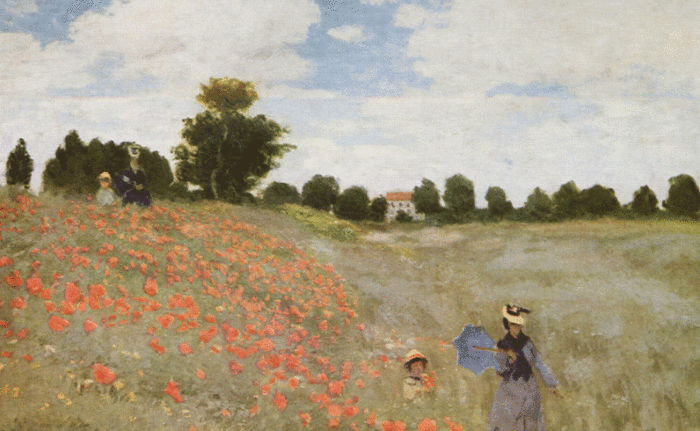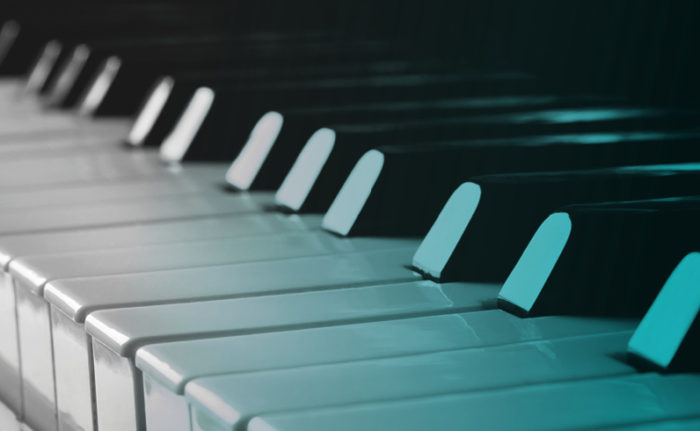On Saturday, July 25, the livestream concert series Live from Jones Hall continues with a performance spotlighting two of the Houston Symphony’s sections: percussion and brass.
Leonardo Soto, principal timpani, and Matthew Strauss, associate principal timpani and percussion, discuss some of the night’s repertoire that also showcases the talents of Brian Del Signore and Mark Griffith.
The percussion and brass sections will both be in the spotlight for this concert. What does it mean to the musicians to be showcased in this way?
Matthew Strauss: Buried within the limitations presented to us by this pandemic, this concert is a bright spot for the brass and percussion sections, offering all of us an opportunity to show our audiences some amazing repertoire they might not have had a chance to hear during “normal” times.
Leonardo Soto: If there is one positive thing about the situation we are living in it’s the fact that with the Houston Symphony, the music does not stop. I really hope we can show how much fun we are having to our audience.

Matthew, you arranged Debussy’s String Quartet for percussion some years ago, with your colleague Doug Wallace. Why did you select that piece in particular?
MS: Back when I was part of a percussion quartet called Battery Four, the ensemble wanted an arrangement of something from the standard string quartet repertoire. The percussive nature of this particular movement from Debussy’s String Quartet made it a good choice for a marimba quartet.
For Abreu’s Tico Tico, the percussion sections members have written their own parts to accompany the brass section. What was that writing process like?
LS: There are so many version of this piece out there, and unfortunately, rhythmically, many of the versions are wrong (to me, a Latin percussionist!). This is a native Brazilian piece, and most arrangements are done with Afro-Cuban rhythms. We all picked a few instruments, I showed the guys some patterns, and we got it going.

The Symphony doesn’t often get the opportunity to perform music by John Cage. Can you tell us about Third Construction?
MS: This is a monumental work composed for four percussionists in 1941. John Cage was one of the pioneers of writing percussion-only chamber music pieces. He often composed for “found” instruments. These are instruments that were initially made or used for nonmusical purposes. They can be a household item or found in nature. Here are a few of the interesting instruments to look for during this piece:
- Each percussionist has large tin cans, and we each need to be able to produce five graduated (or different) pitches from our cans.
- A conch shell: a hole in the shell is cut at one end, and the player blows into it like a brass player. This produces a fantastically tribal sound that is heard towards the end of the piece.
- Each of us plays three tom toms. We took the liberty of changing the types of drums being played from player to player in order to develop more sound contrasts throughout the piece.
- The piece calls for a quijada, the jawbone of a donkey, but we’re substituting it with a vibraslap.
- There are different types of rattles that Cage heard from various types of ethnic music from the Americas.
It’s a very difficult piece—there are a lot of polyrhythms written throughout the work in each of our parts. Every player needs to know the everyone else’s parts intricately.
Leo, how does it feel to be playing percussion instruments that are not your timpani for this concert?
LS: Being able to play other percussion instruments with my Symphony colleagues is a real treat for me. Don’t get me wrong, playing timpani in the orchestra is what I live for—but stepping away from them to do this type of concert is so much fun and keeps my musicality in shape!

Are there any other unusual instruments the percussionists will be using?
MS: Dave Hall’s Escape Velocity has a lot of standard instruments but contains interesting sounds as well. The piece is composed with a groove-oriented nature. There’s a djembe, an African instrument that’s common in world music but not used too much in orchestra setting. There are interesting metallic sounds such as a spiral cymbal, basically a cymbal that was peeled apart, creating a metallic ribbon. I also play a Chinese opera gong, which has a unique sound when played loudly.
LS: The Dave Hall piece was the last piece of the puzzle for the night’s program, and I thought we needed a piece that was completely different from the Debussy and the Cage. The thing about percussion is that there are endless choices and we wanted to cover as much as possible.
What do you hope audiences will walk away feeling after the performance?
MS: I hope to offer our audience an experience that is not commonly found in the Houston Symphony.
Watch live! Join the percussion and brass sections for Live from Jones Hall: Debussy, Joplin, Abreu & More on Saturday, July 25, at 8 p.m. central.



